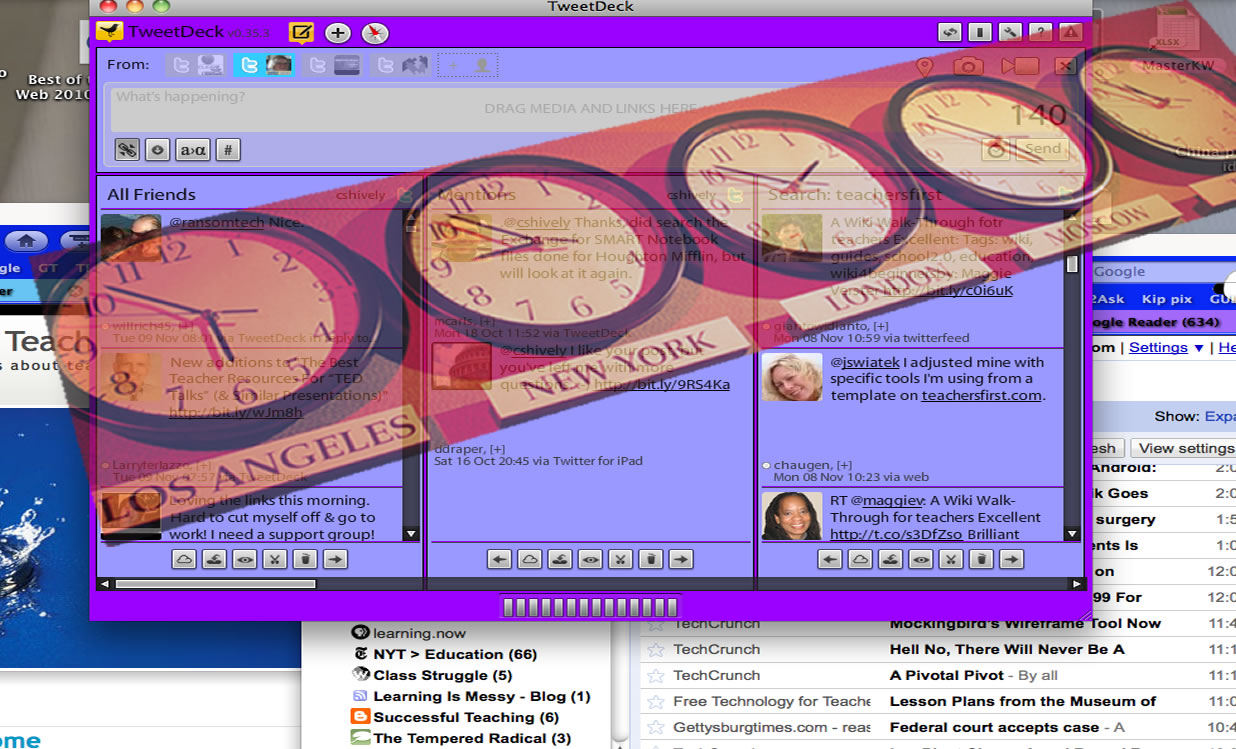On the road to China day 1: miniculture warm up
Do you ever think about the many mini-cultures you pass through on any given day or week? Every culture has its common priorities, common language or dialect, behavior do’s and don’ts and events/celebrations. The mini-cultures you visit in your life are no different, Paying attention to them can be a useful warm-up to visiting or understanding other full-blown cultures in our multidimensional world.
My first day of travel has been just such a warm up as I left home in the eastern U.S. to travel to San Francisco for a morning flight to China. I passed through and noticed:
Mini-Culture 1: my early morning swimming mini-culture. This group meets in the dark around 5:30 a.m. several mornings a week at a local high school pool.
- Common priorities: a good workout and a little friendly locker room conversation on a tight schedule
- Language /dialect: polite small talk (English). No swearing. Special vocab: lane, lap, pace, guard
- Do’s : Complain about the water temp when you get in. Stay in your own lane. Move along quickly in the locker room.
- Don’ts:. Take someone else’s customary lane. Kick your neighbor. Discuss politics. Bother learning last names.
- Events/celebrations: Non-school days when we can linger longer in the locker room. Welcoming back swimmers who have been ill/injured. Opening of outdoor pools for summer.
Mini-culture 2: a middle class neighborhood in rural central Pennsylvania
- Common priorities: getting the kids on the school bus, getting to work, making a living, enjoying outdoor recreation, conservative “family values” (in varying degrees)
- Language /dialect: Middle American. Special vocab: see any study of American slang with a healthy dose of Pennsylvania Dutchisms
- Do’s : Wave to neighbors in passing cars, Take your kids to the bus. Ask “D’ya get your deer?” during the first two weeks after Thanksgiving. Anything you can do for a neighbor who is sick or elderly.
- Don’ts: Forget to wave. Talk about your upcoming trip to China unless you are asked (lest you be considered a snob)
- Events/celebrations: Thanksgiving and Christmas, followed closely by the first day of deer season, opening day of little league, and the first day to launch boats in the lake
Mini-culture 3 : small city airport, large city airports (2) in the U.S.
- Common priorities: packing complete strangers on and off large airborne vehicles, loaded as tightly as possible with the undercarriage filled by possessions in black (and other multicolored) wheeled cases with handles and various tags. Making said people walk endlessly looking for letters A, B, C, D, etc. along seating areas and wide corridors
- Language /dialect: TSA/English/your language of choice as long as you understand English. Special vocab: gate, check in, premier, advantage, sky cap, club, grab-and-go, board (bored), deplane, ground transportation (is that ground like hamburger?)
- Do’s : Walk briskly but change directions often. Make unannounced stops mid-concourse to answer a cell phone. Talk loudly on said phone. Carry expensive bottled water. Approach any manned desk to ask questions as if they are giving something away. If an employee, look at computer and tap on the keyboard incessantly at said desks.
- Don’ts: Leave baggage unattended. Open any door, especially ones that go outside. Be overly nice to anyone. Smile at TSA. Appear to eager to accept overbooking deals.
- Events/celebrations: On time or early flights. “The captain has turned off the seatbelt sign.” Toddler-less planes. Deplaning. Reuniting with your luggage.
But these mini-cultures are so familiar that I can only poke fun at them. At least I was able to use them to warm up my cross-cultural radar. Tomorrow is another day. Within 24 hours, I will have some real observing to do.
What minicultures do you observe on a regular basis?

 and using it on wifi when I can. At least the calendar will still work, but none of the cool apps that connect to the web, unless I want to pay BIG bucks for data roaming.
and using it on wifi when I can. At least the calendar will still work, but none of the cool apps that connect to the web, unless I want to pay BIG bucks for data roaming.






![By McKay Savage [CC-BY-2.0 (www.creativecommons.org/licenses/by/2.0)], via Wikimedia Commons](http://blog.teachersfirst.com/thinkteach/files/2010/10/sherpa.jpg)



